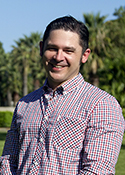Grayndler
Margin: Labor 18.1%
Region: Inner Sydney, New South Wales
In a nutshell: Grayndler is ground zero for the rise of the Greens as the dominant force in inner-city politics in Sydney, but the party has a big hurdle to clear for as long as Anthony Albanese remains member.
Candidates in ballot paper

|
EMMA HURST CHRIS HINDI OSCAR GRENFELL JIM CASEY MEOW-LUDO DISCO GAMMA MEOW-MEOW PAT SHEIL NOEL McFARLANE CHRIS McLACHLAN ANTHONY ALBANESE DAVID VAN GOGH JAMIE ELVY |
Held since 1996 by Deputy Opposition Leader Anthony Albanese, the inner west Sydney seat of Grayndler has been exceptionally strong for Labor since its creation in 1949, with their lowest margin relative to the Liberals having been 9.7% amid a heartland rebellion in 1987. However, the Greens have emerged as a threat in recent years as the new inner-city bohemia has displaced the electorate’s old working class. After progressing from under 5% in 1998 to the low twenties in 2004 and 2007, the Greens vote exceeded the Liberals for the first time in 2010, by 25.9% to 24.2%, and they finished 5.4% short of Labor after preferences. However, a 2.9% drop in the primary vote prevented them from repeating the feat in 2013. Two electorates held by the Greens at state level, Balmain and Newtown, encompass areas covered federally by Grayndler and neighbouring Sydney.
On its new boundaries, Grayndler encompasses Leichhardt in the centre, northern Ashfield in the west, northern Marrickville in the south, Annandale in the east, and the Balmain peninsula in the north. The latter two areas have been gained from Sydney, adding around 25,000 voters in total, which is balanced by substantial losses in the west (12,000 voters around southern Ashfield to Watson, and 3000 around eastern Croydon to Reid) and south (where Barton gains 12,000 voters in Hurlstone Park, Dulwich Hill and Marrickville south of the Bankstown line, together with St Peters further to the east). A further 4000 voters in parts of Camperdown and Newtown have been transferred to Sydney. The changes raise the bar for the Greens, who lose 1.5%, in overcoming the Liberals, who gain 2.4%. The draft boundaries proposed still more substantial change, adding further harbourside territory on the Drummoyne peninsula from Reid, at the expense of further losses around Marrickville to Barton. Anthony Albanese initially contemplated a move to Barton, which on the boundaries proposed would have been solid Labor with little threat from the Greens, while also accommodating his traditional base of Marrickville. However, the adjustments in the final determination were sufficient for him to have held his ground.
Grayndler has existed in name since 1949, but Marrickville has been its only consistent feature. It originally extended southwards to Tempe and Mascot, while the northern parts of today’s electorate were accommodated by the since-abolished seats of Dalley, Evans, Parkes and Martin. The abolition of Dalley in 1969 reoriented Grayndler to the north, but it was then drawn westwards when Evans was abolished in 1977, at which point it extended from Ashfield and Dulwich Hill in the east to Belmore in the west. It moved back to more familiar territory in 1993 when both Grayndler and Sydney were drawn eastwards with the abolition of the beachside electorate of Phillip, and it has encompassed Marrickville, Leichhardt and Ashfield since that time. The newly acquired Balmain peninsula has never been in Grayndler before, having mostly been in Dalley up to 1969, when it was absorbed by the newly created seat of Sydney. Dalley and Sydney were successively held by Labor members of one kind or another without interruption from 1910 onwards.
Grayndler was held for the first 26 years of its existence by Fred Daly, who had previously held the seat of Martin from 1943, and would go on to serve as a minister through the Whitlam years. Daly was succeeded for one term after 1975 by Tony Whitlam, son of the recently deposed Prime Minister, which ended with his dismally unsuccessful attempt to move to St George (known today as Watson) in 1977. Grayndler was then held briefly by Frank Stewart, who was succeeded upon his death in 1979 by Leo McLeay, a NSW Right faction powerbroker who had a controversial stint as Speaker from 1989 to 1993. With McLeay’s retirement in 1993, the seat was held for a term by Jeannette McHugh, who had held the abolished seat of Phillip since 1983. Anthony Albanese came to the seat when McHugh retired in 1996.
Albanese emerged as a figure of influence while working as a staffer to Hawke government minister Tom Uren and NSW Premier Bob Carr, and in time became identified with a Left sub-faction distinct from that associated with Julia Gillard, whose leadership he opposed at every opportunity between 2010 and 2013. After entering parliament in 1996, he progressed to shadow parliamentary secretary in 1998, the outer shadow ministry in 2001, and the shadow ministry itself in 2004. He served throughout Labor’s period in government from 2007 to 2013 as Transport and Infrastructure Minister, and he replaced Wayne Swan as Deputy Prime Minister when Kevin Rudd finally returned to the leadership in June 2013, defeating Simon Crean in a party room ballot by 61 votes to 38. He also added broadband, communications and the digital economy to his ministerial workload at this time.
Following the September 2013 election defeat, Albanese was one of two contestants in the first ever Labor leadership vote that was open to the party membership. Albanese won the party membership ballot ahead of Bill Shorten with 59.92% out of about 30,000 votes cast, but this was overcome by Shorten’s 55-31 victory in the caucus vote, translating into a 2.02% margin after a 50% weighting was applied to each component of the vote. He has continued to serve in infrastructure and transport in the shadow ministry, and also holds the tourism and cities portfolios. His Greens opponent at the next election will be Jim Casey, state secretary of the Fire Brigade Employees Union.
Analysis by William Bowe. Read William’s blog, The Poll Bludger.


